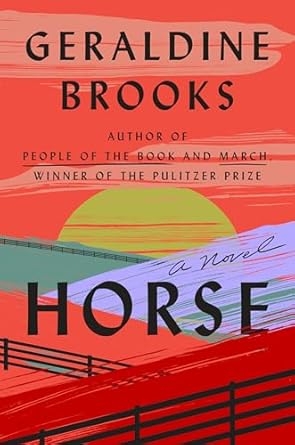
The Australian author Geraldine Brooks is known for her sweeping historical novels. A meticulous researcher, she infuses her characters, settings, and plots with a wealth of detail and insight. She typically picks subject matter that has yet to be explored by other novelists, which makes her work interesting and enlightening too.
Brooks' most recent novel, Horse, (2022) is set primarily in the antebellum South, where, for a wealthy white man, a well-bred horse could serve as a testament to his affluence and prestige, the book revolves around the most important national past-time of that era, horse racing, and one special thoroughbred in particular, Lexington, who actually existed, and is still known for being the greatest stud sire in horse-racing history.
More importantly for me, however, this novel highlights the previously unacknowledged and significant roles played by enslaved black groomsmen and trainers. Brooks sheds light on what their experiences may have been like through the characters of Harry Lewis and his sensitive son, Jarret, who forms a deep bond of compassion and trust from birth to death with Lexington, even as the complicated arc of his own life plays out.
Two other stories are set in parallel to this main thread, one in the recent twenty-first century, which involves a Nigerian-American art historian who rescues a discarded painting of a horse that fires his interest in equine art, and an Aussie osteologist, Jess, who is simultaneously articulating Lexington's skeleton at the Smithsonian. In addition, Brooks takes us to New York and the art world of the 1950s, where the same painting holds a place of importance in the life of the first female art curator of that era.
How all these characters and threads interweave and inform each other is something you'll have to read Horse to discover. I encourage you to do so, particularly if you want to see issues of racism and discrimination explored in an unusual, enlightening, and memorable way.